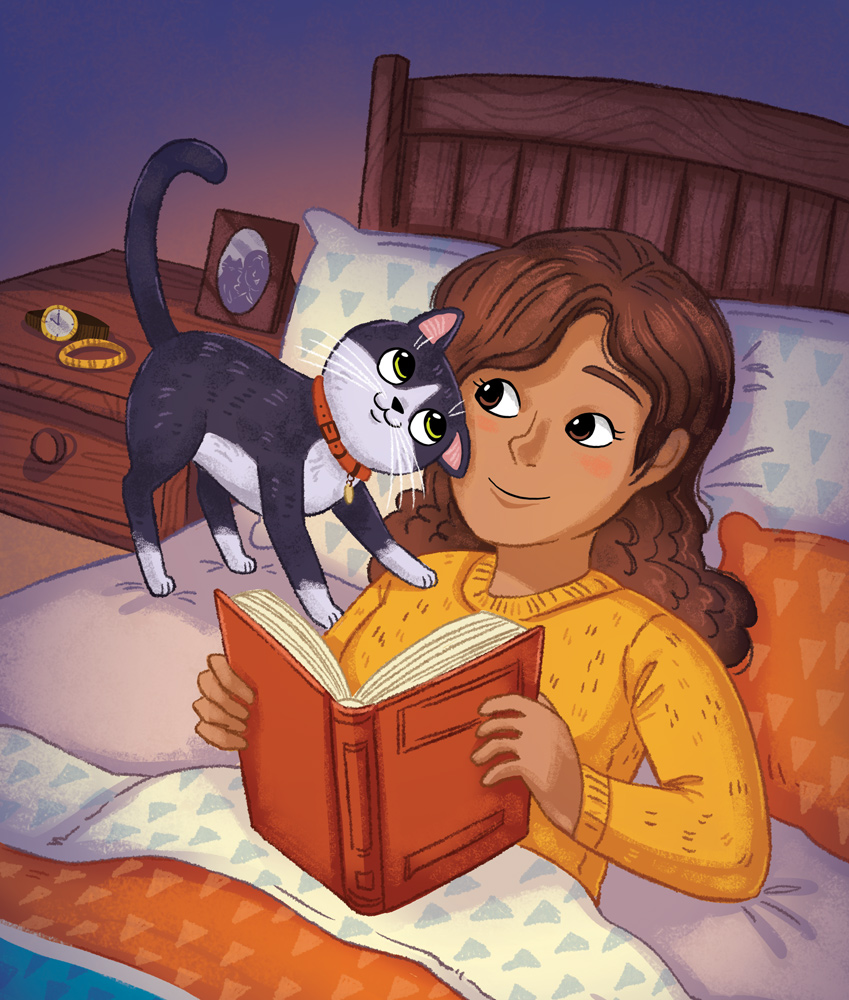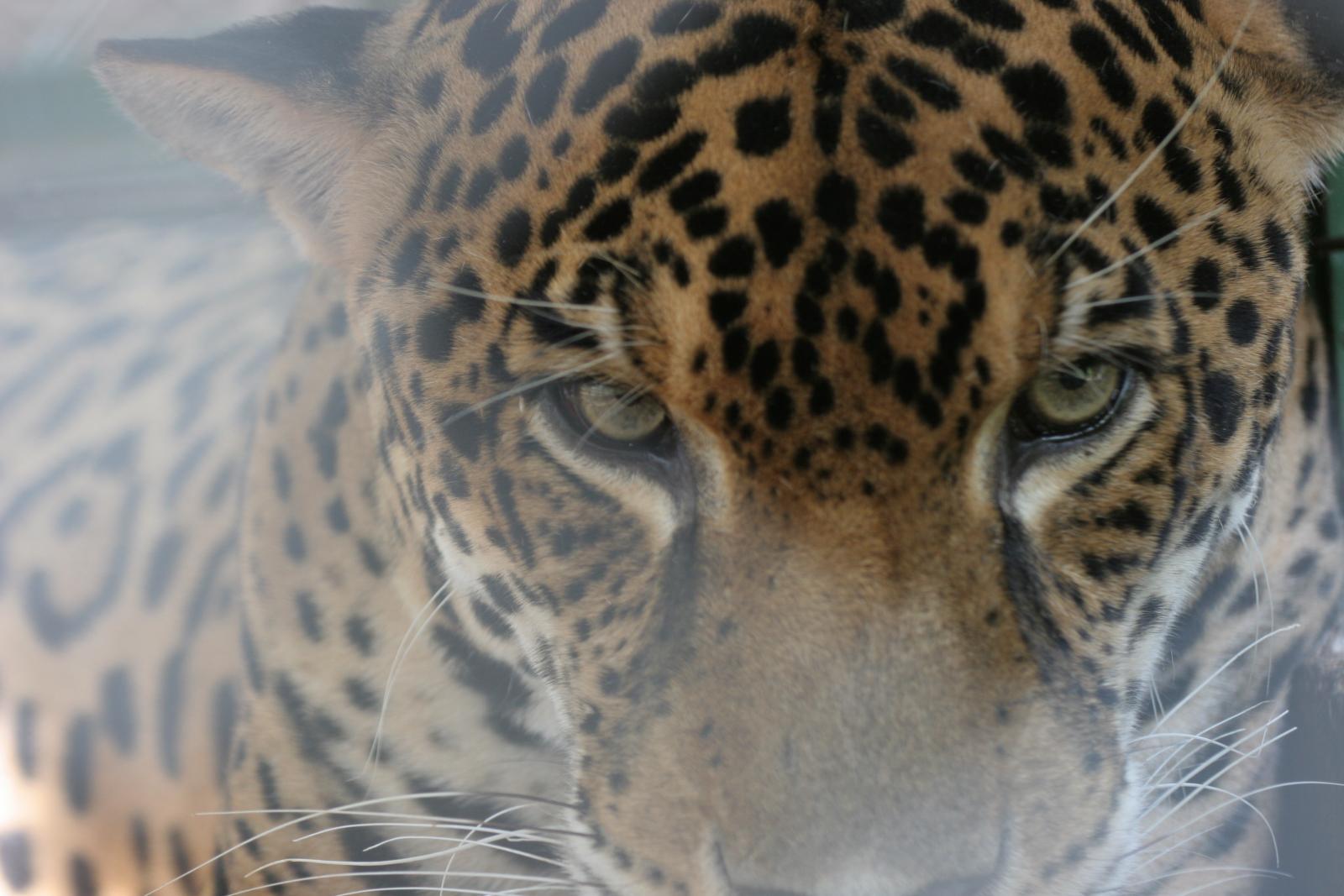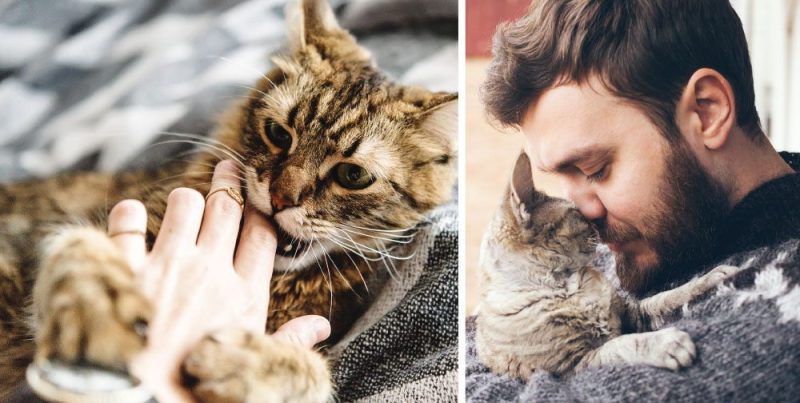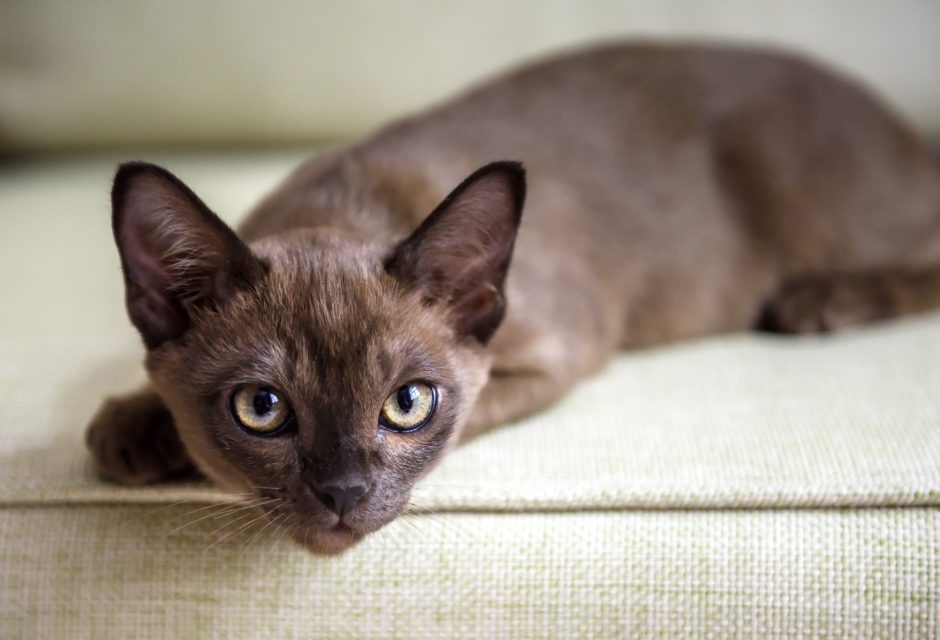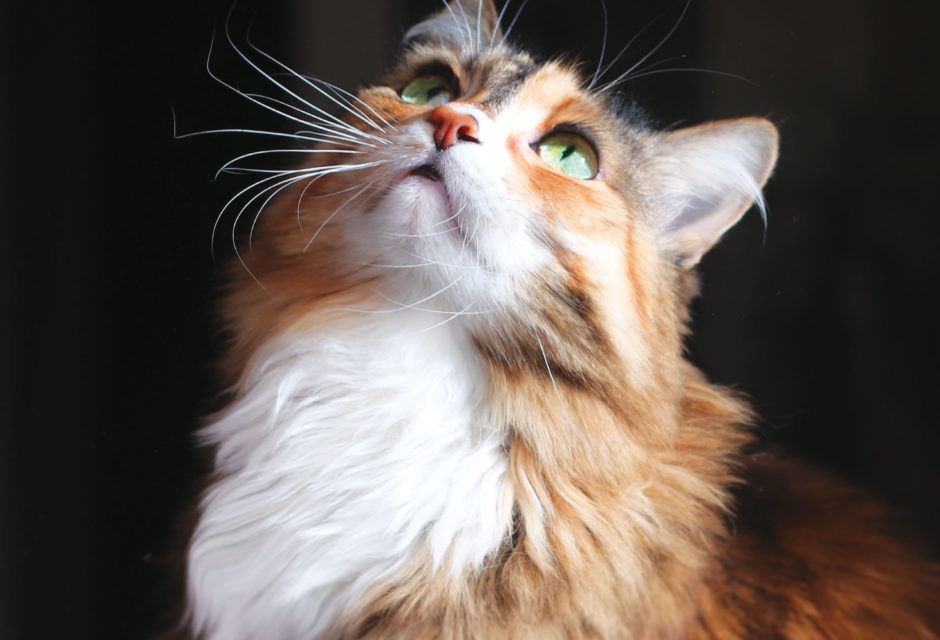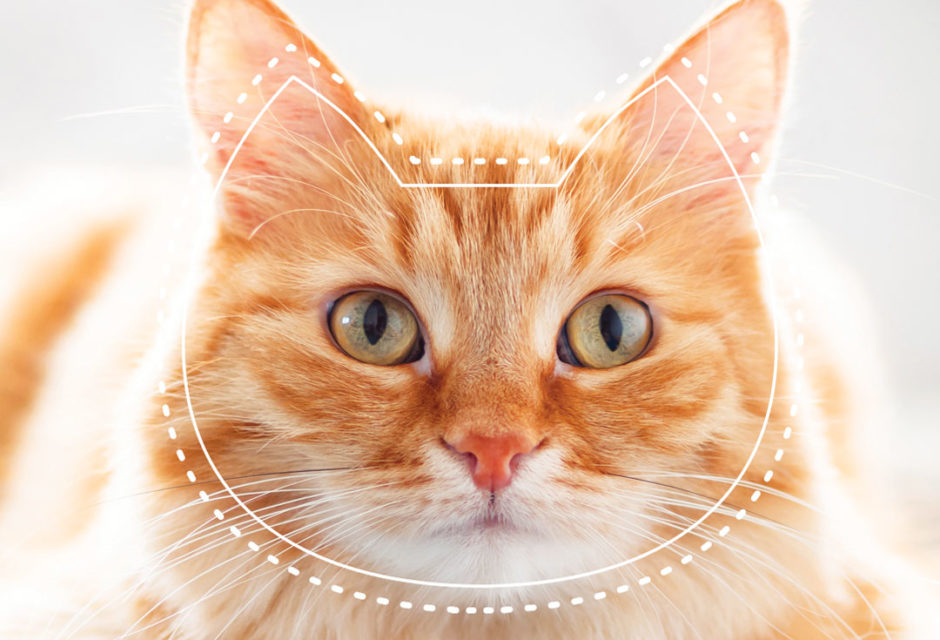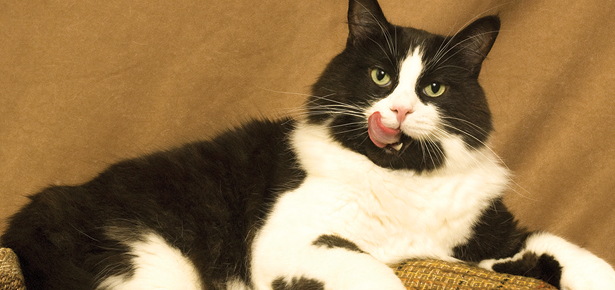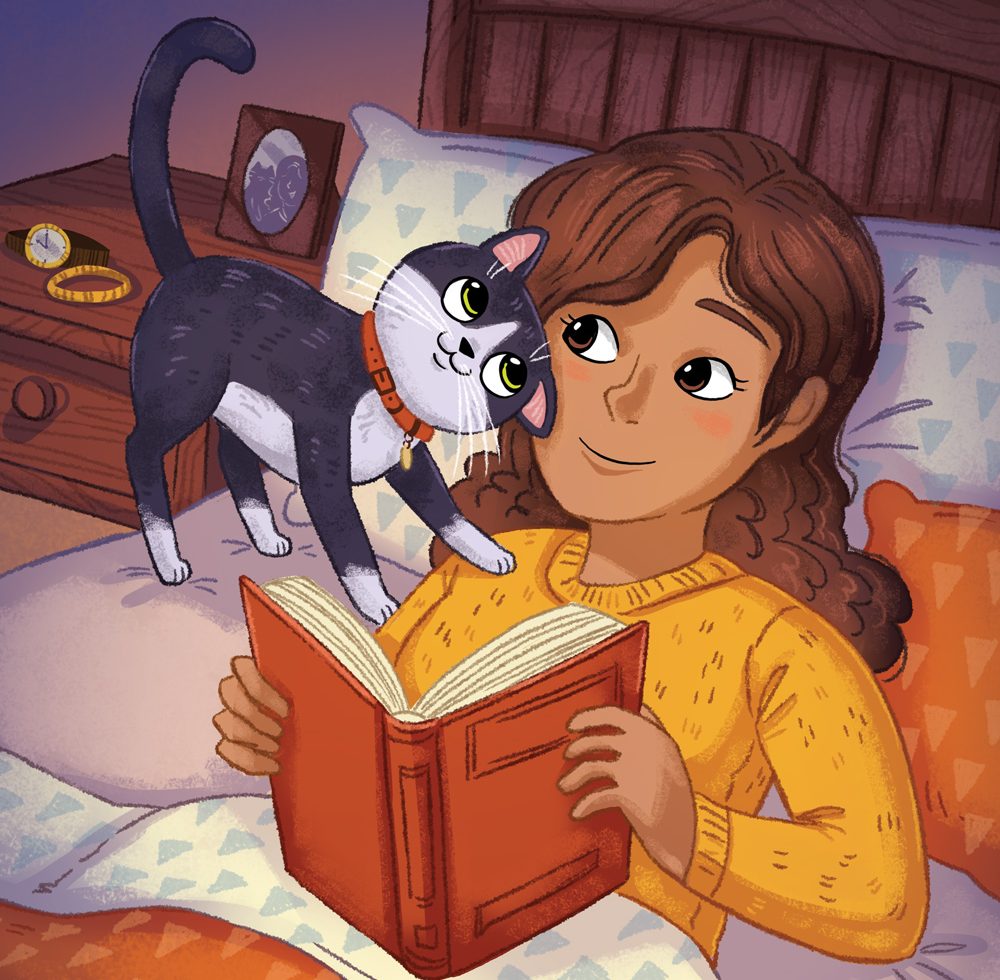
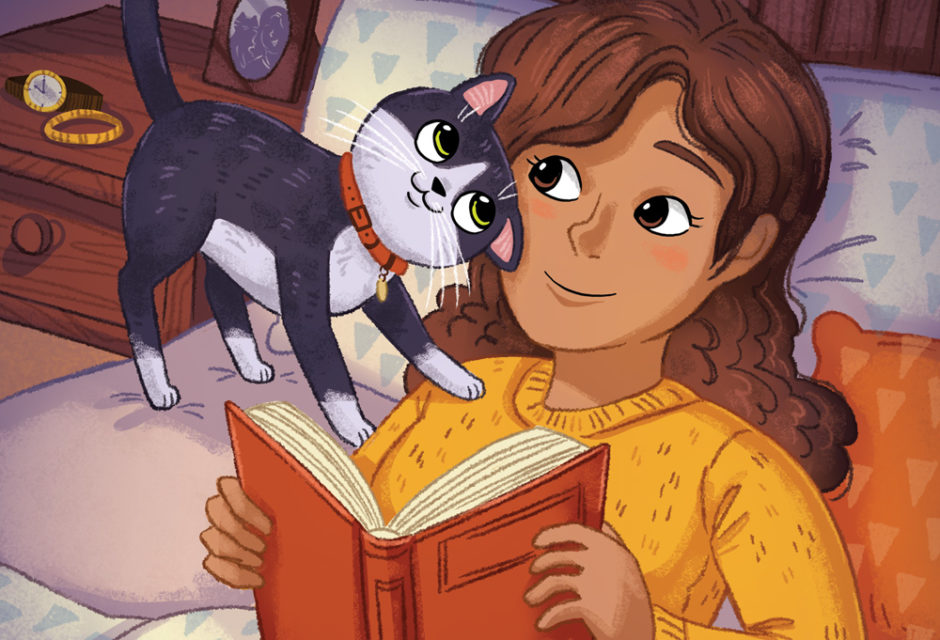
The Evolution of the Social Feline
Scientific studies continue to overturn stereotypes of the antisocial cat
Toronto-based freelance writer Paul Lima, recently diagnosed with multiple sclerosis, struggles to stay awake and finish his story. But a wave of fatigue submerges his will, and he collapses onto the couch seconds before passing out.
When Paul awakes, he registers a deep, content purr vibrating throughout his rib cage. As his eyes flutter open, he sees his blond-hued cat, Champagne, carefully kneading his chest. He is touched by the devotion. “It’s like the cat knew Paul needs company, Paul needs comfort,” he says. “She made a conscious choice to tend to me.”
Paul scratches her under the chin, and Champagne lifts her head so he can reach in further. Then he inches upright and shuffles into the kitchen to find her a treat.
Stories like these refute the prevailing stereotypes of frosty felines. “The dog is man’s best friend, whereas cats are seen as…self-sufficient, (not) caring about their humans,” says Dr. Emma Grigg, Lecturer and Research Associate at UC Davis, School of Veterinary Medicine.
The latest research on feline social savvy, however, has been chipping away at these biases. “There’s a lot of individual variation with cats—some are very solitary but many are not,” says Dr. Grigg. Though cats’ brains retain the imprint of their lone wildcat ancestor, most cats, especially kittens socialized early, can identify our gestures, emotions, voices, and requests.
Perhaps it’s this mix of feral and friendly elements that makes our synchrony even more special. “It is amazing that we have this predator living in our house and it can bond so closely with people,” says Dr. Grigg.
The exploration of feline social cognition (how cats think about others) is a relatively new field. Domestic animals were not even deemed worthy of study in this regard until Hungarian ethologist Dr. Adam Miklosi, Professor, Eotvos Lorand University (Budapest) began investigating human-dog communication in the early 2000’s. A few years later it was the cat’s turn to shine. The resultant research on feline social graces is shedding light on the cat-human kinship.
In order to grasp the workings of the cat mind, we have to trace the evolution of their brainpower, says Dr. Grigg. The African wildcat was an independent hunter with rudimentary social acumen. Aside from scent marking to claim his territory, Felis Sylvestris Lybica had little more to share.
Domestication, which began 8,000-10,000 years ago with the advent of agriculture, gradually civilized these boorish feline forbears. When people started storing grain in barns and attracting rodents, cats took advantage of the freebie meals, slinking in for midnight raids. The farmers were nothing more than meal tickets at this time. “Humans are huge and scary, so initially (the cats) avoided them,” says Dr. Grigg.
Over time, the more outgoing animals who could tolerate our presence scored more rats than their timid feline fellows. “(These) cats stuck around, bred with one another, and produced more cats less afraid,” explains Dr. Kristyn Vitale, Assistant Professor at Unity College in Maine. Humans were likely charmed by these creatures and invited them into their homes as companions.
Illustration by Michelle Simpson
Importantly, these new pets could relate to their owners. A frightened animal can’t look at our faces or learn our communicative signals, says Dr. Grigg, whereas cats more tolerant of humans have the presence to learn our social cues.
These changes in temperament were likely accompanied by physiological and anatomical alterations. We know that domestication developed dogs’ brains in the regions used for social interaction, says Dr, Grigg. Though it hasn’t been documented, cats’ minds likely evolved in a similar fashion, equipping felines with the cognitive tools to process human signals.
Though cats have moved along the spectrum from savage to civilized, the process has not touched each animal equally. Because their domestication is so recent, the most congenial pussycat still harbors a touch of wildcat. Additionally, the house cat’s gene pool continues to mix with that of its closer-to-wild ancestor when pets mate with stray or feral cats. Early handling (preferably between two and seven weeks) can, however, temper the nature of these wildlings and help them vibe with humans.
All these factors have spawned an animal whose affability varies widely. The cat can operate solo, or it can play like a dog, says Dr. Miklosi. “We like variation—cats are an exciting animal to study,” he says.
Dr. Miklosi kicked off the Hungarian study of feline social cognition in 2005, when he compared cats’ and dogs’ responsiveness to human gestures. After hiding treats in one of two bowls, the experimenters pointed towards the invisible food. The pets who headed to the dish that was indicated were rewarded with the snacks. Dr. Miklosi concluded that the two companion animals were equally competent at deciphering human body language.
Cats commune with us in many other ways as well. They have a knack for training their owners to heed their ever-expanding vocabulary used to voice different desires. “Cats learn…which sounds will get what they want from their humans,” says Dr. Grigg.
Cats also read their owners’ emotions. Like human infants, cats use their caregivers’ reactions to evaluate unfamiliar and scary situations, a behaviour known as social referencing. In a 2015 study undertaken by Isabella Mercola, cats and owners watched as a fan with plastic green ribbons was turned on. As the streamers waved and whirred, most of the felines (79 percent) gazed anxiously back and forth between their owners and the menacing machine. When the humans acted worried, the cats eyed the room’s exit, seemingly hatching an escape plan. When the owners smiled at the fan, the cats relaxed.
The investigation confirmed that cats follow the lead of their owners when navigating potentially dangerous environments. This tactic is advantageous, says Dr. Vitale. “That could lead to your survival.”
Cats’ sensitivity to our feelings has also been documented by behavioural biologist Dr. Dennis Turner, Research Director, Institute for Applied Ethology and Animal Psychology in Zurich, Switzerland. “Most cat owners are convinced that cats can read their moods,” he says. In a 2001 paper, he showed that cats were clued in to their owners’ crises. When their caregivers felt down, the animals tried to console them by rubbing against their legs, gazing into their eyes, and vocalizing. Their efforts paid off. “The more the cats did that the better the…mood,” says Dr. Turner.
This attunement to human signals demonstrates the value cats place on the relationship with their caretakers. “When you see someone as the source of care and security… he becomes important to you,” says Dr. Grigg.
This affiliation between caregivers and their dependent cats resembles the tie between parents and children. In this relationship, known as attachment, infants rely on their parents for basic requirements like food and protection.
When these needs are met consistently, the child ventures into the world with confidence, knowing he can retreat to his secure base if threatened. A secure attachment forms in 65 percent of all parent-child relationships.
Dr. Vitale wondered if this dynamic existed between cats and caregivers. In a 2019 experiment, cats and their owners entered an unfamiliar space. When their humans left the room, the cats began crying and scoured every corner for their missing caretakers. When the humans returned, 64 percent of the cats greeted them joyfully, then took off to explore, mirroring the findings of the parent-child attachment study.
The study was the first to demonstrate attachment between cats and humans. “The majority of cats use humans as a source of comfort,” says Dr. Vitale. The cats’ desolation when they were parted from their owners parallels separation anxiety found amongst human babies. Like securely bonded children, the cats bounced back quickly after their caregivers returned. The prevalence of secure attachment amongst cats and owners (64 percent) was almost identical to that amongst humans (65 percent).
Those who ignore their cats reap what they sow. “They’re producing a cat who doesn’t seek them out.”
Cats’ craving for closeness was documented in another study published by Dr. Vitale in 2017. In the experiment, shelter cats and pets were offered four options simultaneously: a toy, a treat, a scent, or human interaction. Experimenters clocked the amount of time the animals spent engaging with each. Fully half of all cats devoted most of their time to human company, favouring this possibility over all the others, including food. “The fact that cats prefer social interaction…indicate(s) that this is important,” says Dr. Vitale. “They do care.”
Though they prize our presence, our cats keep their distance when we’re distracted. In a 2018 experiment, cat owners were instructed to either sit listlessly on the floor or call and caress their cats. The felines ventured closer to their caregivers and spent more time with them when their overtures were requited. When the protocol was repeated with shelter cats, these animals were hungrier for companionship, pursuing contact with strangers even when rebuffed. The paper’s take home message is that house cats want to hobnob with their humans, but only if we’re responsive. In other words, those who ignore their cats reap what they sow. “They’re producing a cat who doesn’t seek…them out,” says Dr. Vitale.
Most humans, fortunately, are gratified by their cats’ attention and return their devotion. “When we care for something and they reciprocate…we become fond of them,” says Dr. Grigg. Cats also boost our self-esteem when they greet us with a “meow” and follow us around the house. Also, “there is no judgement…that is hugely valuable for us,” notes Dr. Grigg.
As science continues to overturn negative stereotypes of cats’ affability, experts like Dr. Vitale feel vindicated. “Most people would think cats aren’t social…This is not supported by our research,” she says. Far from acting self-sufficient, cats master our messages, sit in our laps, and purr to show their contentment. “All are social behaviours indicating there is a…relationship between individuals.”
These conclusions have real world implications. “If you have outdated perceptions about cats…you would have a weaker bond with (them),” says Dr. Grigg. Suppose you think your cat is low maintenance, for instance. You might then ignore him. But even the most reclusive cats require a modicum of regard and recreation. When these essentials are missing, bored cats may vent their frustration on your furniture or on a fellow feline. These misbehaviours can create further rifts between owners and pets.
Another common belief is that felines aren’t trainable, says Dr. Grigg. But cats can, in fact, be taught to sit, walk in a harness, or even to lie still in a kayak. “Shared activity is an important component of the bond between human and companion animal,” says Dr. Grigg.
Laurel Jones, from Monte Lake, BC, found solace when she shared her grief with her cat. Before her husband Skip Jones died of a brain bleed in 2017, their “tough-looking” tortoiseshell cat ignored her completely. “She would cuddle with him…but wouldn’t have anything to do with me,” says Laurel.
That changed overnight after Skip’s passing. The once oblivious cat tuned into her anguish and offered comfort.
“I had really black times when I just didn’t feel life was worth anything anymore,” says Laurel.
Evenings were the worst. There were no distractions, and she couldn’t fall asleep in her half-empty bed. A floor below, Bella pricked up her ears to Laurel’s sobs and would pad upstairs to the bedroom and leap onto the bed. The rich rumble of her purr gradually penetrated through the pain. Laurel’s heartbeat would slow and her tense limbs loosen, until finally, finally, she’d slip into slumber.
“Bella was my nighttime lifeline,” says Laurel.
Join the newsletter and never miss out on cat content again!
"*" indicates required fields
By clicking the arrow, you agree to our web Terms of Use and Privacy & Cookie Policy. Easy unsubscribe links are provided in every email.





